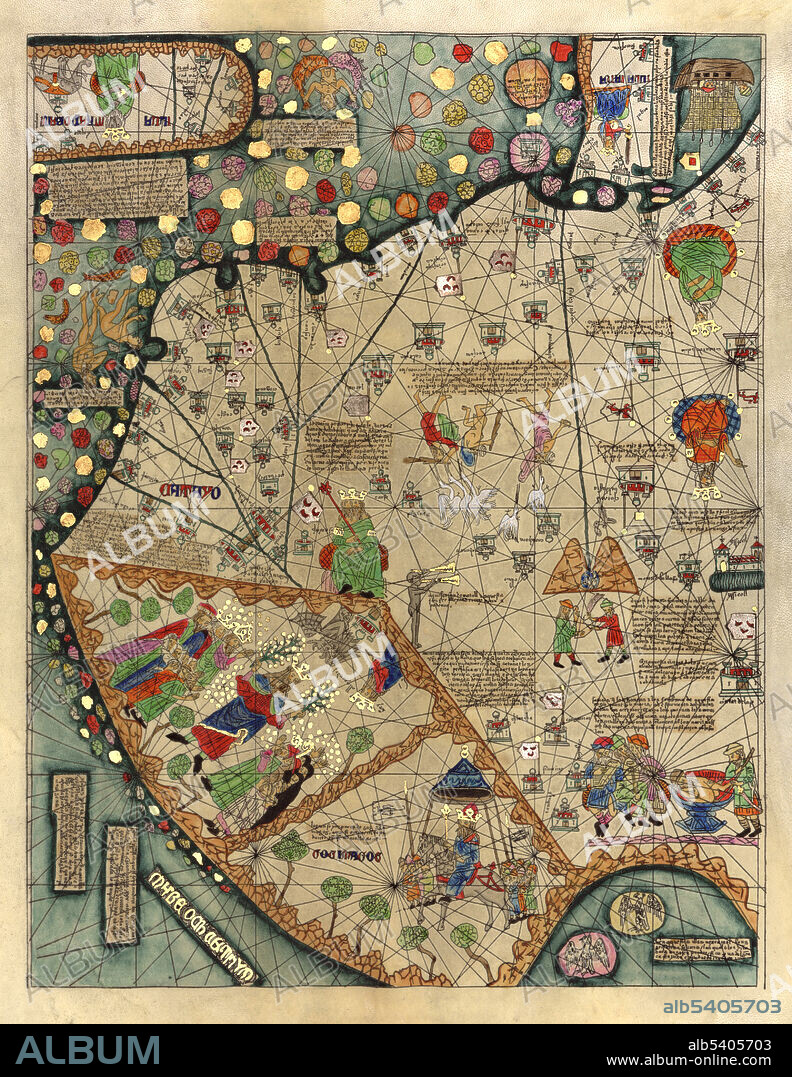alb5405703
Abraham Cresques, Catalan Atlas,1375

|
Add to another lightbox |
|
Add to another lightbox |



Title:
Abraham Cresques, Catalan Atlas,1375
Caption:
Mapamondi (more commonly written as mappa mundi referring to any medieval European map of the world). Relief and depths shown pictorially. The Catalan Atlas is the most important map of the medieval period in the Catalan language (drawn and written in 1375). It is attributed to Abraham Cresques (1325-1387) a master map-maker and builder of clocks, compasses, and other nautical instruments, in collaboration with his son, Jehuda Cresques (1360-1410). Abraham was a leading member of the Majorcan cartographic school coined by historians to refer to the collection of predominantly Jewish cartographers, cosmographers and navigational instrument-makers and some Christian associates that flourished in Majorca in the 13th, 14th and 15th centuries until the expulsion of the Jews. It has been in the royal library of France (now the Bibliothèque nationale de France) since the time of King Charles V. The Catalan Atlas originally consisted of six vellum leaves (each circa 65cm by 50cm) folded vertically, painted in various colors including gold and silver. These were cut in half later, and mounted on wooden panels enclosed in a leather binding.
Credit:
Album / Science Source / LOC/Geography and Map Division
Releases:
Model: No - Property: No
Rights questions?
Rights questions?
Image size:
3247 x 4200 px | 39.0 MB
Print size:
27.5 x 35.6 cm | 10.8 x 14.0 in (300 dpi)
Keywords:
1375 • 14TH CENTURY • 14TH CENTURY, THE • ABRAHAM CRESQUES • CARTOGRAPHY • CATALAN ATLAS • CATALAN CHART • CELEBRITY • FAMOUS • GEOGRAPHY • HISTORY • MAJORCAN CARTOGRAPHIC SCHOOL • MAP MAKING • MAP • MAPAMONDI • MAPMAKING • MAPPA MUNDI • MEDIEVAL • NAVIGATION • NAVIGATIONAL MAP
 Pinterest
Pinterest Twitter
Twitter Facebook
Facebook Copy link
Copy link Email
Email

